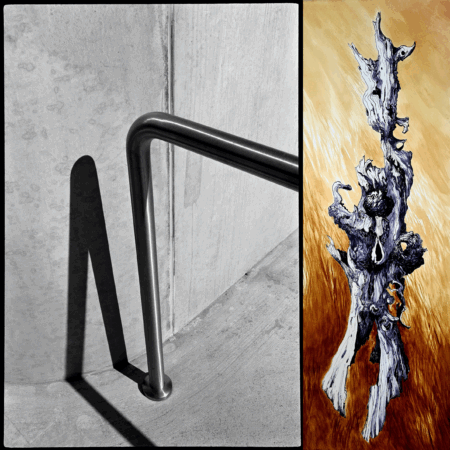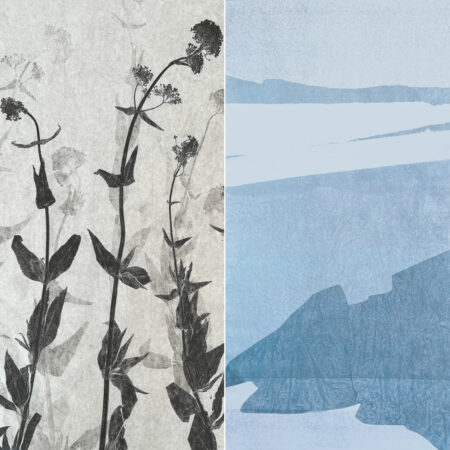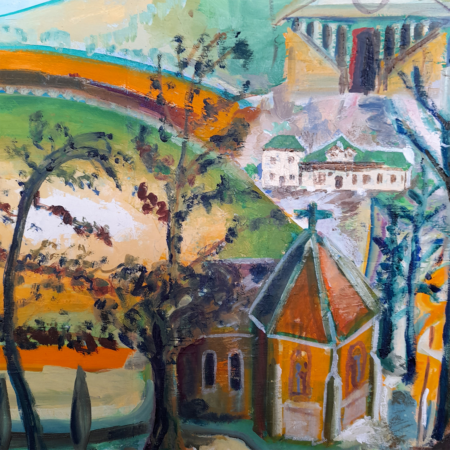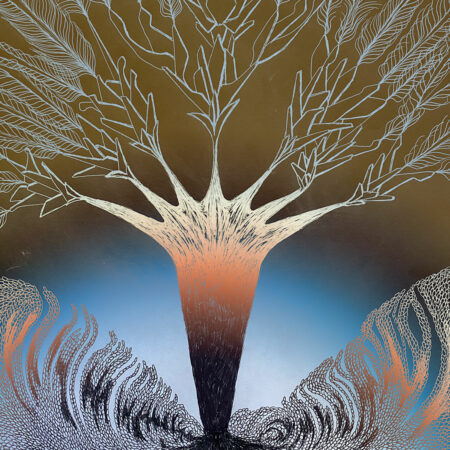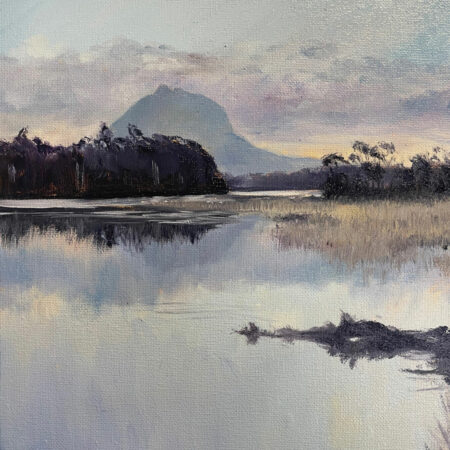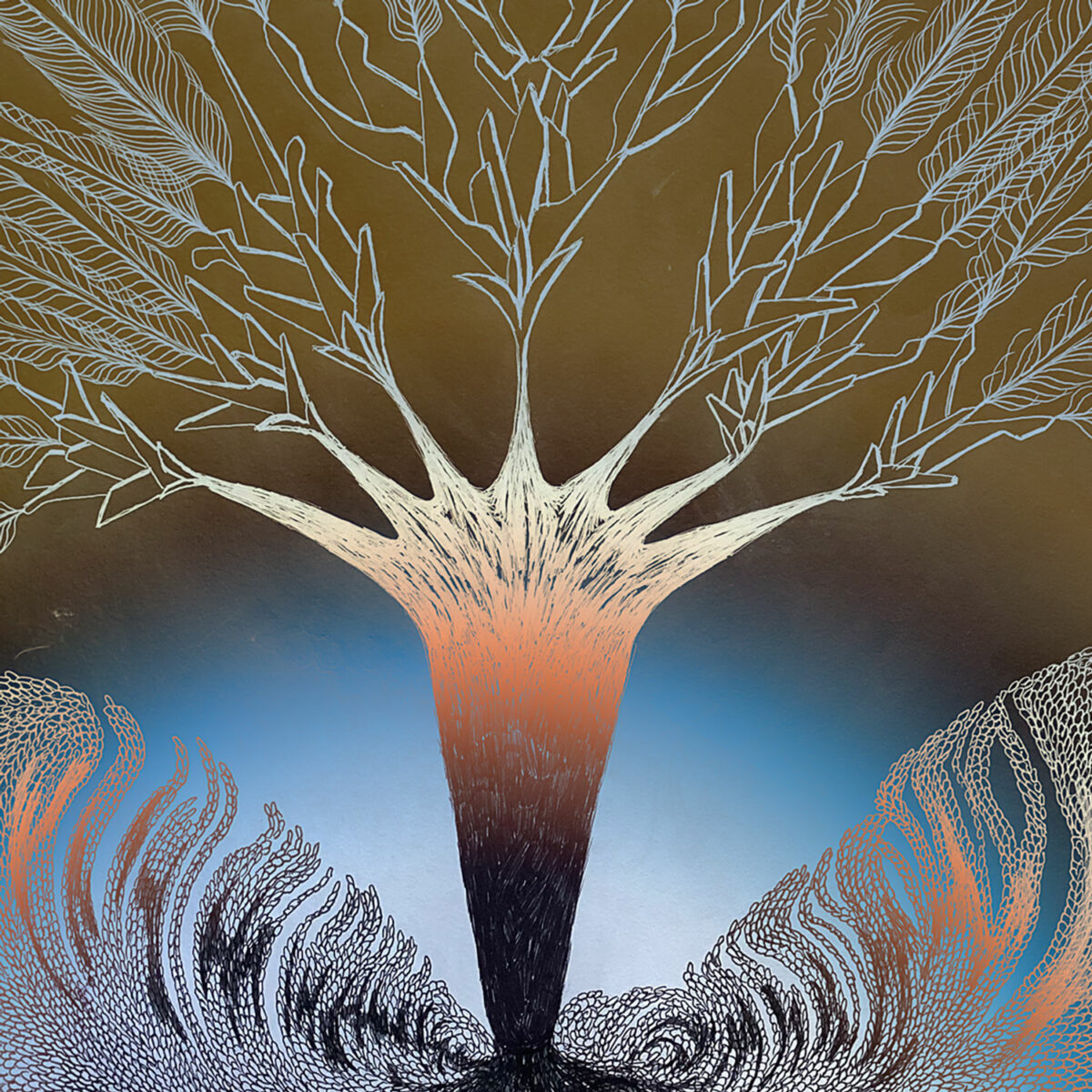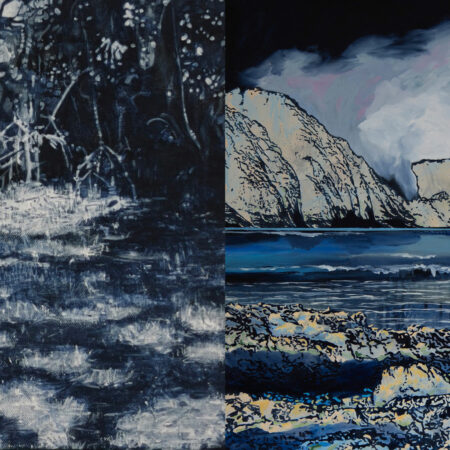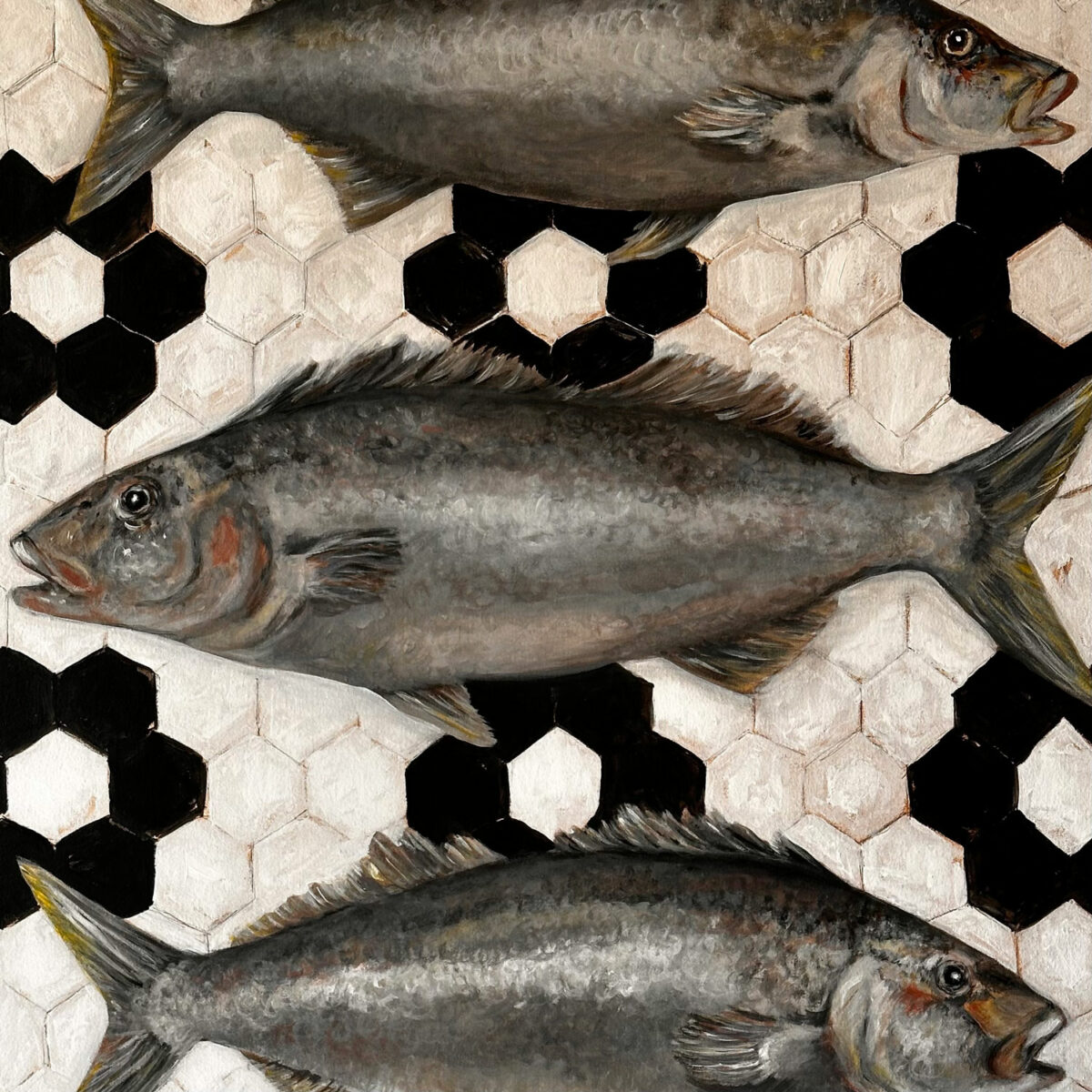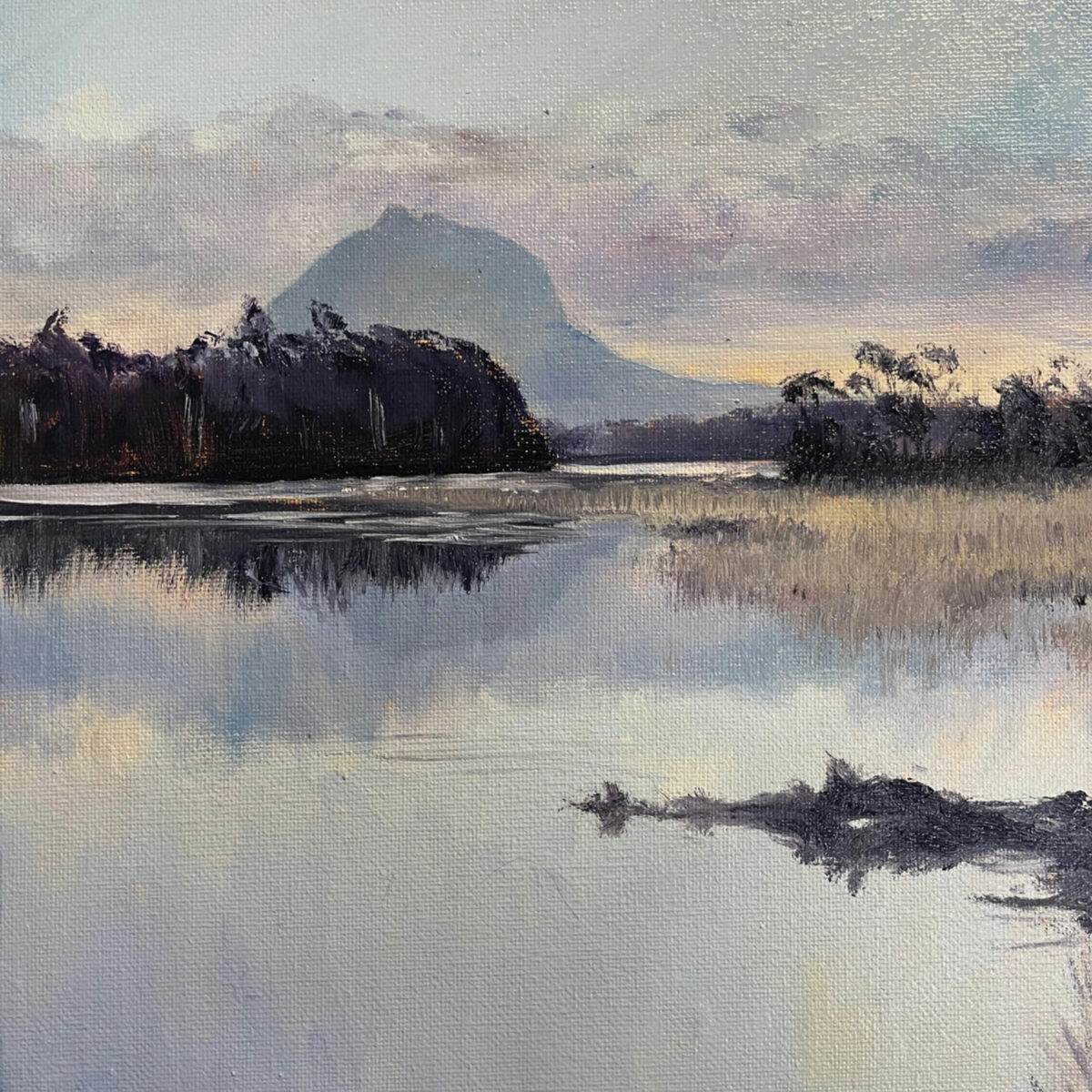Opening Event :
Thursday 31 July 2025, 5:30pm – 7:30pm
Exhibition to be opened by Raymond Arnold
Exhibition Dates :
Thursday 31 July – Sunday 10 August 2025
10:00am – 4:00pm daily
An exhibition by two Tasmanian landscape painters, each in the thrall of the natural world. Robyn Harman and Jill Crawford examine changing and challenging ecological conditions, from distant horizons to close and enveloping images of forest floors.
Jill Crawford has created a series of works which communicate her growing interest in an area of bushland that exists along the boundary of the college where she works. Exit the oval, traverse the apron and enter the bush. Stand still for a moment and listen. It’s hard to remember that a shopping centre exists to the west. An ecologist recently opened Jill’s eyes to the importance of this tract of land. She talked of what once was and her vision of what could be again. The forest floor, once blanketed with native flowers such as orchids, chocolate lilies and yellow stars, has changed vastly.
In pursuit of establishing gardens where the grass was soft underfoot and the environment was far less prickly and harsh, land was cleared and alien species introduced. Heavy feet trod, seeds were dropped, and grass clippings smothered all things delicate underneath.
Jill Crawford examines the diversity of flora that she finds within a small, defined quadrat of the forest floor. The sharp, the spiky, the barbed, scratchy plants to be found there are photographed, drawn and then translated into a series of monochromatic acrylic paintings on canvas.
Robyn Harman continues her exploration of Tasmania’s wild coastlines and islands, the passage of time, of the exchange between the human and the natural, seascapes and their embodiment of our dreams and stories.
In this exhibition she focuses on the challenging environment endured by ecological systems. Rocky outcrops stand mute and resolute in steadfast solitude, bracing against the storms of surrounding oceans. They are signifiers of isolation but also protection and shelter for many species. The constant movement of wind and water, the gradual erosion of stone, changing climate, all of which test their capacity to resist and survive.
Rocks and islands provide ecological niches, protection from the wind, rain and churning sea. The forest floor, refugia persisting in an urbanised environment, carries its richly biodiverse lineage despite the pressure of invasion.
These are sanctuaries; a haven for a myriad of animals, birds and insects and home to a diverse range of endangered plants.






